
A clipper was a type of mid-19th-century merchant sailing vessel, designed for speed. Clippers were generally narrow for their length, small by later 19th century standards, could carry limited bulk freight, and had a large total sail area. "Clipper" does not refer to a specific sailplan; clippers may be schooners, brigs, brigantines, etc., as well as full-rigged ships. Clippers were mostly constructed in British and American shipyards, though France, Brazil, the Netherlands and other nations also produced some. Clippers sailed all over the world, primarily on the trade routes between the United Kingdom and China, in transatlantic trade, and on the New York-to-San Francisco route around Cape Horn during the California Gold Rush. Dutch clippers were built beginning in the 1850s for the tea trade and passenger service to Java.

Flying Cloud was a clipper ship that set the world's sailing record for the fastest passage between New York and San Francisco, 89 days 8 hours. The ship held this record for over 130 years, from 1854 to 1989.
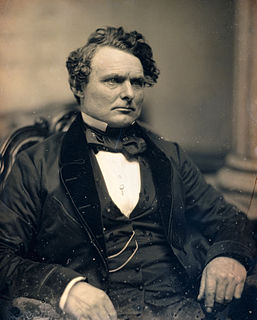
Donald McKay was a Canadian-born American designer and builder of sailing ships, famed for his record-setting clippers.
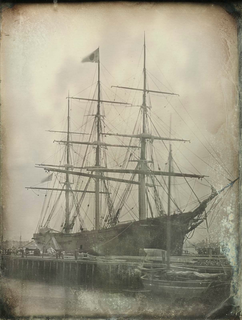
Champion of the Seas was the second largest clipper ship destined for the Liverpool, England - Melbourne, Australia passenger service. Champion was ordered by James Baines of the Black Ball Line from Donald McKay. She was launched 19 April 1854 and was abandoned 3 January 1877, off Cape Horn.

Lightning was a clipper ship, one of the last really large clippers to be built in the United States. She was built by Donald McKay for James Baines of the Black Ball Line, Liverpool, for the Australia trade.

When launched in 1853, Great Republic was the largest wooden ship in the world. She shared this title with another American-built ship, the steamship Adriatic. She was also the largest full-rigged ship ever built in the United States.

James Baines was a passenger clipper ship completely constructed of timber in the 1850s and launched on 25 July 1854 from the East Boston shipyard of the famous ship builder Donald McKay in the United States for the Black Ball Line of James Baines & Co., Liverpool. The clipper was one of the few known larger sailing ships rigged with a moonsail.

Sovereign of the Seas, a clipper ship built in 1852, was a sailing vessel notable for setting the world record for fastest sailing ship—22 knots.

Stag Hound was launched on December 7, 1850 in East Boston, Massachusetts. Designed by shipbuilder Donald McKay for the California trade, she was briefly the largest merchant ship in the world. She was in active service from 1851 until her total loss in 1861.

Surprise was a California clipper built in East Boston in 1850. It initially rounded Cape Horn to California, but the vessel's owners, A. A. Low & Brother, soon found that the vessel performed well in Far Eastern waters. From that point onward the vessel spent much of her working life in the China trade, although the vessel also made three trips from the East Coast of the United States to California.
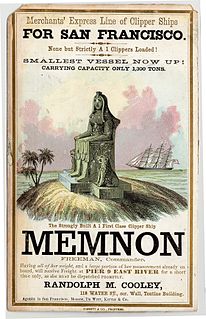
The Memnon was the first clipper ship to arrive in San Francisco after the Gold Rush, and the only clipper to arrive in San Francisco before 1850. Built in 1848, she made record passages to San Francisco and to China, and sailed in the first clipper race around Cape Horn.
Ganges was an 1854 clipper ship built by Hugh R. McKay in East Boston. Although she was famed for a race with Flying Cloud and Bald Eagle, the race actually never took place.
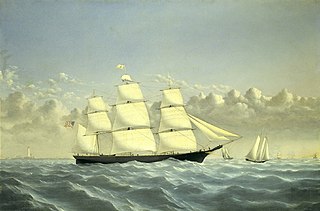
Golden West was an 1852 extreme clipper built by Paul Curtis. The ship had a very active career in the California trade, the guano trade, the coolie trade, the Far East, and Australia. She made a record passage between Japan and San Francisco in 1856.

Comet was an 1851 California clipper built by William H. Webb which sailed in the Australia trade and the tea trade. This extreme clipper was very fast. She had record passages on two different routes: New York City to San Francisco, and Liverpool to Hong Kong, and beat the famous clipper Flying Dutchman in an 1853 race around the Horn to San Francisco.
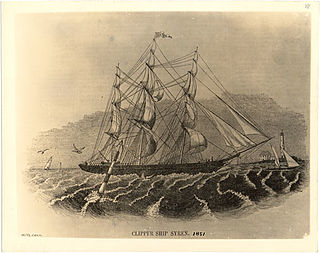
Syren was the longest lived of all the clipper ships, with a sailing life of 68 years 7 months. She sailed in the San Francisco trade, in the Far East, and transported whaling products from Hawaii and the Arctic to New Bedford.

Stornoway was a British tea clipper built by Alexander Hall in Aberdeen, Scotland in 1850. She was a further development by Hall on the clippers built in Aberdeen in 1848, being larger and more obviously suited to deep sea service. She was ordered by Jardine Matheson specifically for the tea trade. In the late 1840s, tea was available earlier in the season in China, so the first ships to load had to beat to windward against the north-east monsoon to get across the China Sea. The details of the hull shape designed by Hall had this requirement in mind.

Red Rover was the name of two clipper ships.
Romance of the Sea was a clipper ship launched in 1853. She was "the last extreme clipper ship built by Donald McKay for the California trade". Her original figurehead was "a small female figure, intended to represent Romance, with the name of [Sir Walter] Scott on one side, and [James Fennimore] Cooper on the other - the greatest romancers of the century". She lost that figurehead during a storm on her third voyage.

Glory of the Seas was a clipper ship launched in 1869. She was the last merchant sailing vessel built by Donald McKay.

















